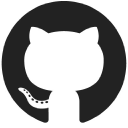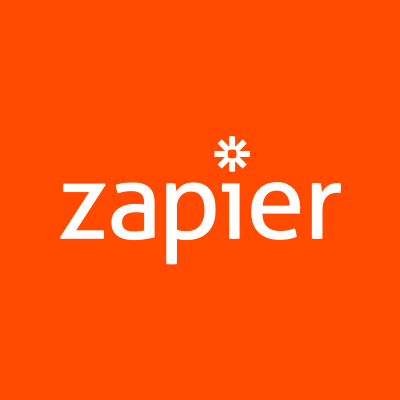
On Building A Business Helping People Switch Out Of WordPress
Hi, I’m Jason, from Singapore. I’m a self-taught designer and developer and recently started Sweet Jam Sites to help WordPress site owners from going bald. Yeah, WordPress-induced baldness is a thing. A real thing. But I'm not selling hair tonic here.
Known causes of WordPress baldness: Tearing hair out in frustration. Losing count of sleepless nights after being hacked. A never-ending Sisyphean cycle of security updates required to keep their websites functioning, only to see their web page loading in dog's years. Something somewhere on the website stops working because of a “mandatory” update. Or paying a king's ransom to host companies and development agencies annually to ensure everything works. Many business owners of WordPress sites will know the pain I’m talking about. My remedy to WordPress baldness: Switch out of WordPress to a static JAMstack site, and no more hair-tearing.
Ultimately, being a recovering WordPress site owner, I made this service for myself. I’d been slowly migrating my sites out, and the pleasure is real. I sleep well at night, knowing that no SQL injection attack can bring down my site. And now even my hair’s growing back lol.
But Sweet Jam Sites didn’t start this way. It took me a while to figure out my value proposition (and it’s still a work-in-progress). So far, Sweet Jam Sites doesn’t make much money yet, but the feedback from my first few customers had been promising! Hair growth notwithstanding. I’m hoping that sharing this very early stage starter story will help some folks take the very first baby steps.

What's your backstory and how did you get into entrepreneurship?
My professional background lies at the intersection of UX design and social impact. I started as a designer in the civil service, helping government agencies create citizen-centered products and services that deliver public good and social impact. But the more I designed products and services, the more confident I grew in my abilities to start up. I had caught the entrepreneurship bug and harbored grand illusions of autonomy and freedom to work on anything I wanted. This is still mostly true, except the many other hard challenges I was too optimistic to not know or want to know back then!
Don’t just make something that you would want to use, especially if you’re serious about making a living off your product. Make something that you will willingly pay for.
So I left a cushy, well-paid, and meaningful job in the civil service, much to the detriment of those around me. What was I doing?! I ran off wanting to build software products and services, but in the meantime, as a way to not starve, I continued to do what I was good at and started Outsprint, a one-person consultancy providing design sprints as a productized service for government agencies and not-for-profit organizations. That’s a starter story for another day perhaps! I’m self-taught when it comes to development, and I tried the 12 startups in 12 months challenge in 2018 as part of self-enforced learning to become an indie maker. I didn’t start interested in coding but fell into it because I’m addicted to the rush of making things. I’ve so far made about 15 products.
Being a designer, validating ideas and products through user research and iterative prototyping comes as second nature. So I took to the indie makers’ way of working lean and scrappy, launching a minimum viable product fast, to test product-market fit. Thinking back, the human-centered design approach probably took ages compared to what indie makers can achieve! It was a refreshing yet familiar approach for me, like a fish back in the water. So when I fell in love with JAMstack recently, I wanted to find ways to test and validate how I can use this cool web technology as a business. That’s why I started Sweet Jam Sites.
Take us through your entrepreneurial journey. How did you go from day 1 to today?
A chance encounter with Stackbit got me checking out the site, and the next thing I knew, I’m hooked! In just a few minutes on Stackbit’s visual onboarding tool, a few clicks here and there to choose the template and the required web services, and bam! I have a JAMstack website ready for any SaaS business, and the only thing left that I needed to do to make it truly mine was to customize the content and link up a custom domain. I didn’t even need to touch any command line of code!. The ease of setting up a blazingly fast and super secure website based on modern web technologies, all in a few minutes, just blew my mind. As sappy as it sounds, it was love at first sight. Geeky, I know.
If this solves my pain, I’m sure others like me need this solution I discovered. Sweet Jam Sites was born as a result. It’s a productized service for building websites for businesses, but specifically, JAMstack websites with free hosting. Initially, I pitched it to other productized services, a group I’m part of and familiar with. For productized services, by a productized service. The value proposition then is the free hosting component and the fact that it’s a done-for-you service instead of a DIY web builder. This saves them not just annual hosting fees but also time and effort. I built the JAMstack site basically without code and also hooked up the onboarding and payment workflows using Google Forms and Stripe-based payment gateway Wirize. Very scrappy and lean way to create an MVP to test if this is something people would pay for. Easy peasy I thought, and half-expected people to be banging on my door, at midnight, for this service!
The first thing I did was to offer to build a friend’s service business website for free, to see if providing a service like that was possible. And it was! Throughout the process, I was jotting down process steps and the information I needed, which fed into my customer onboarding form later. I also created profiles on freelancer sites (Upwork, 99Designs, Fiverr) to showcase this new type of web design and build service and to test out the market demand for it. The great thing about Fiverr is that it provides gig analytics and impressions as well, so that helps a lot in gauging interest.
I then scoured for leads on websites and places that my potential customers—service businesses and freelance professionals providing services—might be. Indie Hackers, Makerlog, Reddit, Starter Story, Carousell, Upwork, Fiverr, 99Designs, Telegram groups, Facebook groups. I went to places where they might be posting gigs (e.g. Upwork), but also where they were talking (e.g. Facebook, Telegram). What was surprising and new was how much easier it was to find them in places where they were promoting themselves! Starter Story was one such site. When I saw Lenny’s story and website on Starter Story, I knew I could provide value. Thankfully he saw the same too!
I decided to go all out and provide a cold site as a proposal. I did up a demo website using the content on his existing website. In a way, I did work even before he paid me. I called it a “cold site”, and used the demo as a proposal instead of persuasive words. Visuals and tangible prototypes speak a thousand words. I sent the link to him, all the while stating upfront that “this is a cold sales email”. He replied that cold emails were something he tried before, and he respected that transparency and honesty. Most important of all, he liked what he saw on the demo site, and it so happened he had been thinking about revamping the site. Opportunity meets the need. I knew I needed to do whatever it takes to serve this first customer well. The monetary payoffs weren’t life-changing for sure, but it was the spirit that mattered. I wanted to start right and do it well. Even if it meant doing more than what the service was supposed to deliver.
Whatever it takes.
And I did! I’m glad it went well, for both sides. He enjoyed the process and gave a glowing testimonial in return. I got paid, and also learned about some new kinks in the process that I need to look out for in the future.
Here’s his review at the end:
“Sweet Jam Sites is a pleasure to work with! Jason was incredibly helpful and knowledgeable. He held my hand through the entire process and thoroughly answered every single question I had. If you don’t know the difference between a URL and a nameserver, and even if you do, I highly recommend working with Sweet Jam Sites to help you get your website up and running! He even saved me money because I previously paid for hosting, where now the hosting is free. You can’t beat that.”
– Lenny Bron (TheBlogProofreader.com)
But reality has a way of humbling entrepreneurs. It was a nice start, but without good SEO and content marketing, nor a huge Twitter following or any influence for that matter, Sweet Jam Sites soon fell into the graveyard corner of internet oblivion. A few other cold site proposals I sent out didn’t work either. I lost motivation.
Then COVID-19 happened and the world went to shit. But funny enough, all that time at home in lockdown was just the kick in the ass to get me started back on Sweet Jam Sites again (ok money woes was the bigger kick). I went back to basics, tried to build up more social proof first by offering free sites for COVID-19 related causes. That worked a charm! I managed to get quite a few testimonials that way. I also bugged the folks at Stackbit for help on making my website good for SEO, and finally fixed it recently.
How are you doing today and what does the future look like?
Today, Sweet Jams Sites had pivoted once again. I figured the initial value proposition was too broad (All businesses? What?) and too non-critical (Just free hosting? Yawns.). I didn’t want Sweet Jam Sites to be just a good-to-have vitamin. It needs to be a painkiller, solving thorny issues that sting customers regularly and they would gladly pay good money for. I got me thinking back to my “love at first sight” encounter, and what it came down to was how it solved many of my problems dealing with WordPress. Somehow, somewhere along the way, I got too excited and stupidly over-broadened the addressable market. I’m niching down now to just WordPress site owners and exploring further sub-niches within that huge group where JAMstack would make the most sense.
I’m focusing more on marketing from now on, starting from the top of the marketing funnel again – blog posts, more content, more community sharing. And using tools like Google Alerts to hunt down my target customer group. Everything is still pretty manual at this point, but I’m hoping to integrate more automation tools like Zapier. Traffic, time on site, and conversion are negligible at this point, to be honest – after all, this is a very early stage starter story!
Total revenue since inception had only been about $199, unfortunately. But operational costs are almost negligible. Other than annual fees for a domain at about $10, web hosting fees are zero. So I broke even…. I guess? Of course none of that paid for the founder salary. Hence, my next milestone goal is to bring Sweet Jam Sites to at least $1000/m revenue and try to graduate this from a side project to the main one.
Through starting the business, have you learned anything particularly helpful or advantageous?
Find where your customers are by where they are selling their stuff
For Sweet Jam Sites, my initial problem was that I was targeting business owners of productized services. But the reception seems lukewarm at best. If not them, then who? I’m sure there’s more non-technical founders, owners of service businesses, and freelancers who would find my solution compelling. Where else could they be hanging out? I went online to hunt them down. I looked in Indie Hackers (not much), Makerlog (even less), Starter Story (promising leads). But a conversation with a friend got me thinking about where freelancers would list their services. So I went looking into a local bulletin platform called Carousell. It’s like a local but better version of Craigslist, and indeed, there are many freelancers there listing their services, in marketing, accounting, admin. I manually scraped their websites and emails, compiled them all into a crude CRM spreadsheet, and cold emailed them.
Give first, and hopefully, they reciprocate
The key to using the Principle of Reciprocity is to be the first to give and to ensure that what you give is personalized and unexpected. For some of these leads with more potential, I even made a new JAMstack website based on their existing website, copy-and-pasting the content over. A bit more time-consuming, but I wanted to try this gifting approach to first demo what their new site can look like, and hopefully, to elicit some reciprocity. Even if the lead goes cold, at least I would have built up a series of different demo sites to show others. The next tactic is to create some sites for specific vocations, like accountants, marketing, etc.
Cold sales, or warm help?
To be honest, I never quite took to cold sales techniques. I don’t enjoy it when it happens to me, and (still) see it as a major source of annoyance and noise. So suspending my principles to try cold sales had been difficult. What I enjoy doing instead is helping someone with warmth – the opposite of what cold sales mean. I’m still trying to come up with less annoying ways to help people, provide value, without coming across in a cold sales-y manner. Dropping email bombs on someone, even in the spirit of helping with warmth, still sounds cold and sales-y.
Moreover, there isn’t any existing interaction or relationship to start with when it comes to cold emails. Why should anyone listen? I wouldn’t. I was lucky this time around. One answered the call, while the many dozens I sent out didn’t. While this was encouraging, I’m not sure cold-sites-as-proposals will have the scalable payoffs I’m seeking. I need a warmer, more relational lead-in to a sale. That’s more my style. A little conversation starter perhaps, or a discussion back and forth on a forum. Before offering something in suggestion. I can accept that if I’m on the receiving end. So, warm help, not cold sales.
What platform/tools do you use for your business?
I love Stackbit, Netlify, Github, Google Analytics/Alerts/Forms, Stripe/Wirize, unDraw because these are free tools that any early startup founder can use to get started. It matters because I’m not earning revenue yet.
Automation tools like IFTTT and Zapier are promising for a solo entrepreneur like me because it helps reduce manual work and scale my efforts.
Supportive communities like Indie Hackers, Productized Startups, Makerlog keep me going.
What have been the most influential books, podcasts, or other resources?
Marketing resources like Marketing Examples by Harry Dry, and Indie Hackers Growth Bites are easy to understand and provide lots of inspiration and ideas for marketing experiments.
Podcasts like Indie Hackers, Rework by Basecamp, The Tim Ferris Show, anything with Naval Ravikant in it, generally feed into my inspiration and motivation wellspring to keep hustling on this entrepreneurship journey.
Atomic Habits by James Clear was the best book I read in 2019 and in a long time. It has been instrumental in helping me build my productivity and entrepreneurial habits, like marketing, selling, monetization. Learning how to break new habits down into tiny steps makes it easy to develop them.
Antifragile By Nassim Taleb was a great big picture kind of book that challenged me to think about how I can be not just resilient and being able to bounce back from chaotic situations but to actually benefit and gain from them instead.
Advice for other entrepreneurs who want to get started or are just starting?
Product-founder fit vs product-market fit
There’s a lot of startup wisdom going around about finding product-market fit as a critical success factor, that you need to create a product that the market wants, and solves a pain point for customers that they will pay for. I did everything the other way around for Sweet Jam Sites, contrary to conventional wisdom - fell in love with JAMstack tech, then tried finding a problem for it to solve. Is it any less valid an approach? I’m not sure. It does run counter to much of my instincts as a human-centered designer. But I know for sure that I have a product-founder fit because I like JAMstack. So even though it’s challenging right now to get the business to profitability, you can be sure I will persist and keep trying because there’s product-founder fit. And anything that keeps you in the game as long as possible is a good approach, I think.
You can’t monetize an audience you don’t have.
The funnel matters. Awareness > Consideration > Decision > Retention. I can’t monetize (Decision, Retention) when I got no traffic (Awareness). “Duh!”, but trust a marketing noob to make this stupid mistake. I wanted to start monetizing the business right from day one, but I might have gotten ahead of myself. Lesson well learned, for sure. I got to start from the beginning all over again, and get more content out, optimize my site’s SEO, and experiment in Google and Facebook ads. Marketing is a long game, and I need more patience than I initially expected. Marketing also required a different mindset. I realized I enjoy the act of creating more than the act of storytelling. Some people are born marketers, great at selling a story about their product. I’m not. Again, this is an inner narrative that’s blocking my progress and something that I have to continue to work on. I remembered how irksome I felt sending out that very first cold email. After sending out many and getting the cold shoulder, I feel much more thick-skinned now lol.
Make something that you would want to pay for.
I don’t know why it took me this long to realize, and in hindsight, it sounds so obvious and silly that you might be wondering why it’s even an epiphany. For what felt like the longest time, I always followed that golden rule. Be your user. Dog Food your product. Make something you’re also personally invested in. I kept to that, and always made something I would want to use myself. Useful stuff. As a designer involved in UX consulting and understanding user needs when designing products, I like to think of myself as someone who knows how to design something that users want. But since starting on my indie maker journey, I’d been okay in getting users for my products, but not so successful in getting paying customers. I could never understand what’s missing. If it addresses a need and they’re using it, why aren’t they paying? Or so I assumed.
There’s a higher threshold to cross when it comes to getting someone to pay for your product, not just use it. Especially digital stuff on the internet, where the common expectation is to get for free. I was also probably designing stuff that’s more vitamins, not painkillers. Useful, good-to-have, but ultimately, not that critical. Designing for user needs is one thing, but having that business acumen to see whether what you’re designing translates to something a user would want to pay for, feels like another skill altogether. That’s one muscle that, regrettably, I probably didn’t train that much in my past career with governments and nonprofits!
So, don’t just make something that you would want to use, especially if you’re serious about making a living off your product. Make something that you will willingly pay for. Ask yourself: “Would I pay for this? Right now?” Be brutally honest with yourself, and if it’s no, then tweak it, iterate it to something that fulfills that benchmark.
Behind every story of overnight success is a slow grind you never heard.
It’s a slow grind, not the usual overnight success stories that we’re used to reading about in the news. Sometimes I wonder if I’m doing something wrong, but reading stories of other startups here on Starter Story and elsewhere made me realize that most of us are grinding it out on our own time, at our own pace. So, say no to startup porn, and yes to getting turned on by consistency.
Where can we go to learn more?

Download the report and join our email newsletter packed with business ideas and money-making opportunities, backed by real-life case studies.

Download the report and join our email newsletter packed with business ideas and money-making opportunities, backed by real-life case studies.

Download the report and join our email newsletter packed with business ideas and money-making opportunities, backed by real-life case studies.

Download the report and join our email newsletter packed with business ideas and money-making opportunities, backed by real-life case studies.

Download the report and join our email newsletter packed with business ideas and money-making opportunities, backed by real-life case studies.

Download the report and join our email newsletter packed with business ideas and money-making opportunities, backed by real-life case studies.

Download the report and join our email newsletter packed with business ideas and money-making opportunities, backed by real-life case studies.

Download the report and join our email newsletter packed with business ideas and money-making opportunities, backed by real-life case studies.















